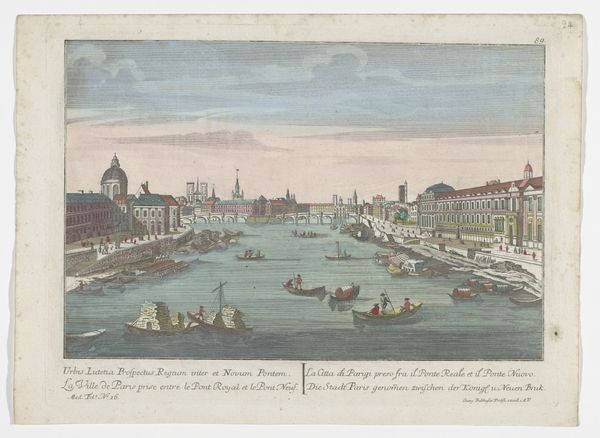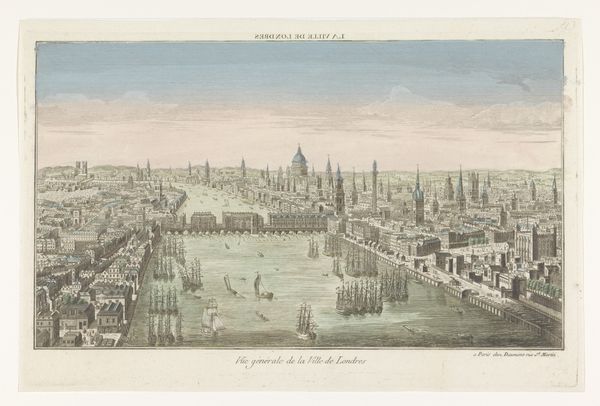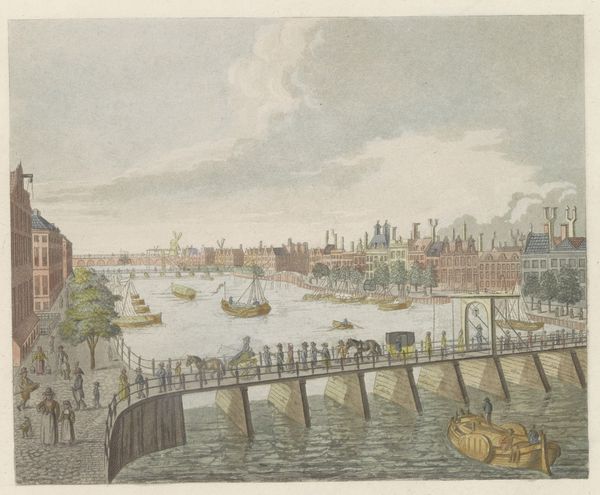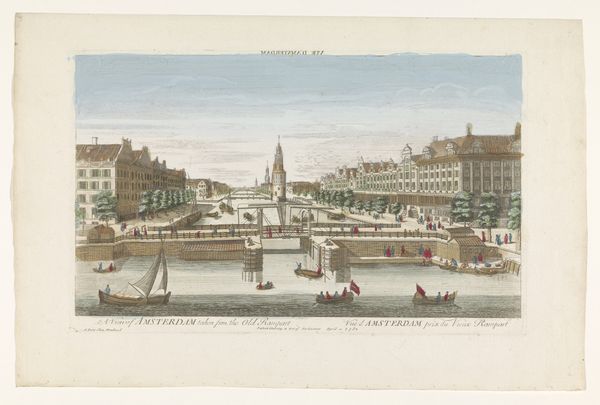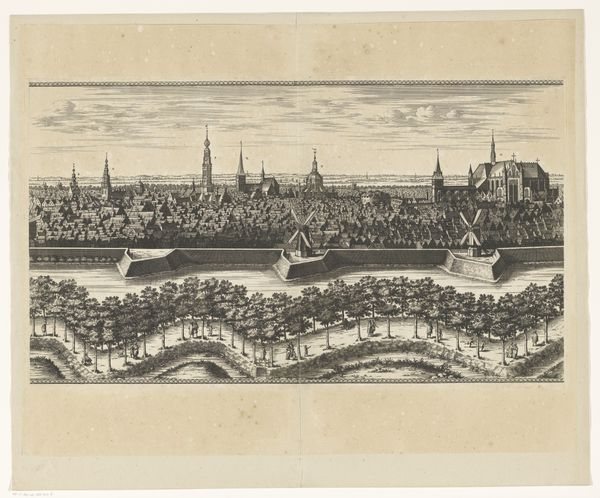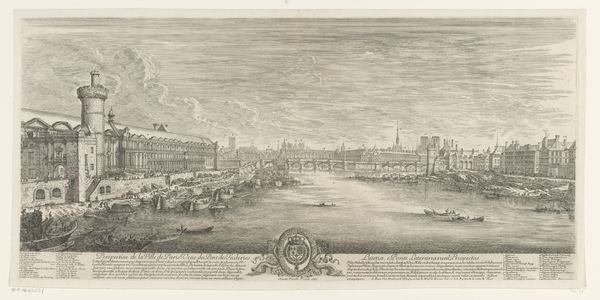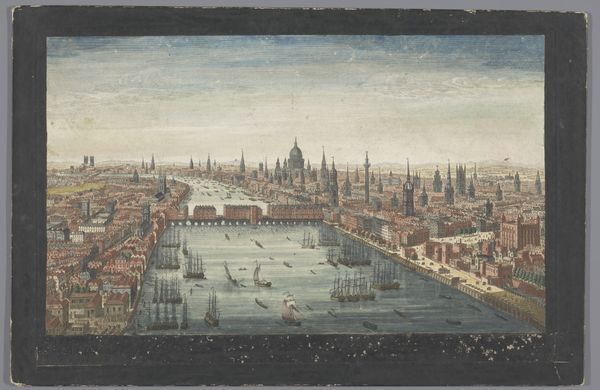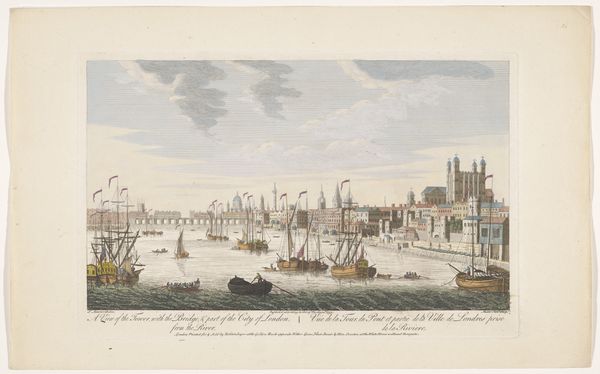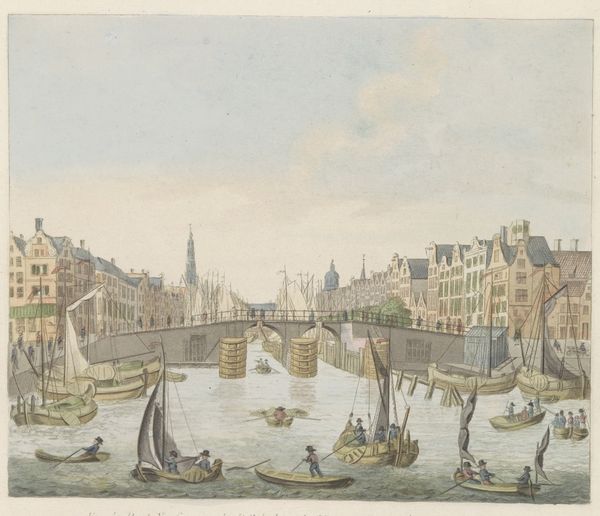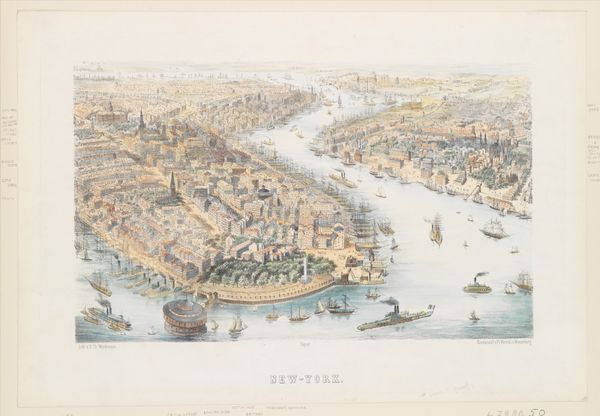
print, watercolor, engraving
#
water colours
#
baroque
# print
#
landscape
#
watercolor
#
coloured pencil
#
15_18th-century
#
cityscape
#
engraving
#
watercolor
Dimensions: height 261 mm, width 402 mm
Copyright: Rijks Museum: Open Domain
Editor: Here we have "Gezicht op de stad Londen," or "View of London," by Robert Sayer, possibly created between 1751 and 1758. It's a print combining engraving and watercolor, held at the Rijksmuseum. I'm struck by the aerial perspective and how it organizes the sprawling city into almost geometric sections divided by the Thames. How do you interpret this work? Curator: The image presents an interesting study in contrasts. Notice how the architectural forms – spires, domes, and clustered buildings – punctuate the primarily horizontal composition defined by the river. The strategic application of color serves not merely to represent reality but to direct the viewer's gaze, creating a visual rhythm. The texture achieved through engraving, further articulated by delicate watercolor washes, gives the scene a vibrant, almost palpable quality. Editor: I see what you mean. The placement of St. Paul’s Cathedral really anchors the composition. Are there any other elements you see contributing to the visual structure? Curator: Absolutely. The progression from foreground to background operates according to principles of visual hierarchy, yet Sayer manages to maintain a consistent level of detail throughout the work. Observe how ships populate the Thames, arranged in formations which subtly echo architectural elements onshore, blurring boundaries and unifying the image space. It is not merely topography; it's a designed system. Editor: That's fascinating; I didn't consider the ships as part of the structure. Thanks for pointing that out! Curator: My pleasure. Paying close attention to details within artworks expands our capacity to analyze art.
Comments
No comments
Be the first to comment and join the conversation on the ultimate creative platform.
